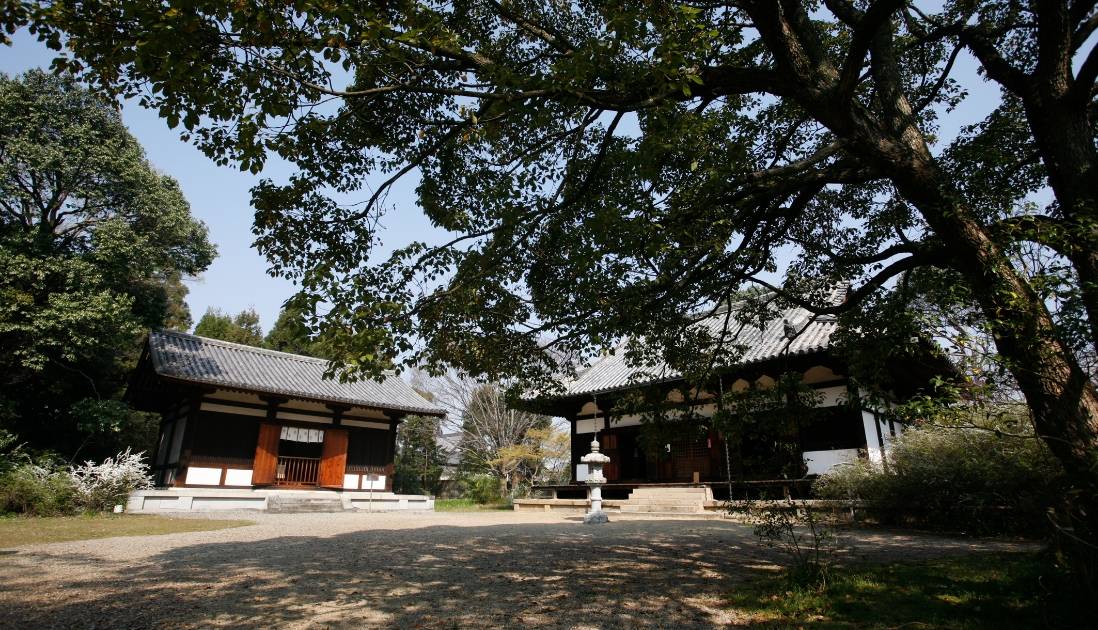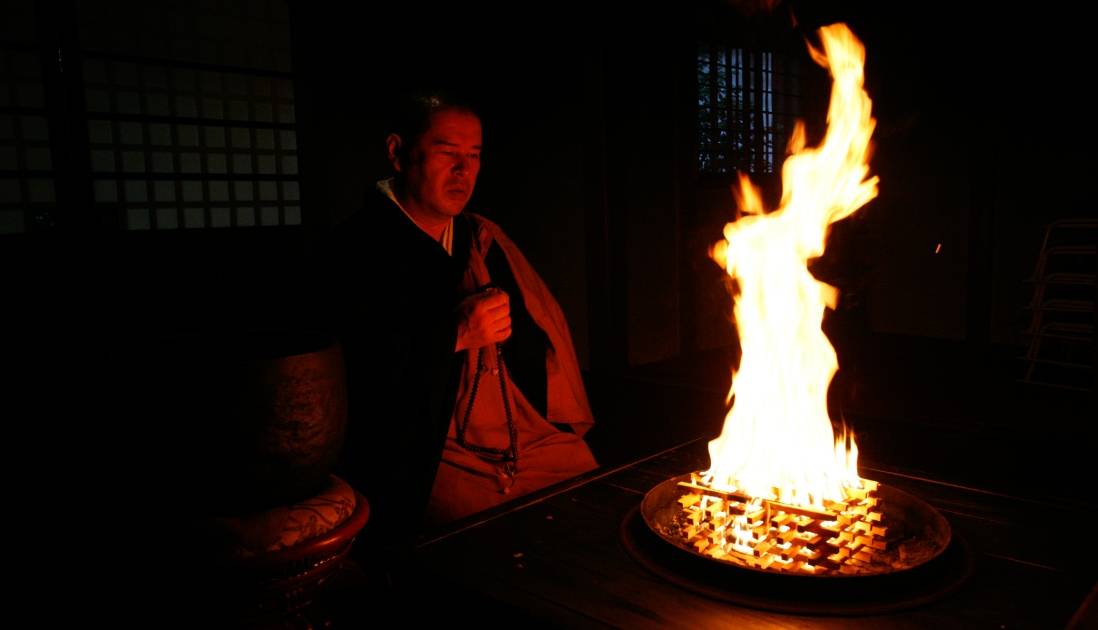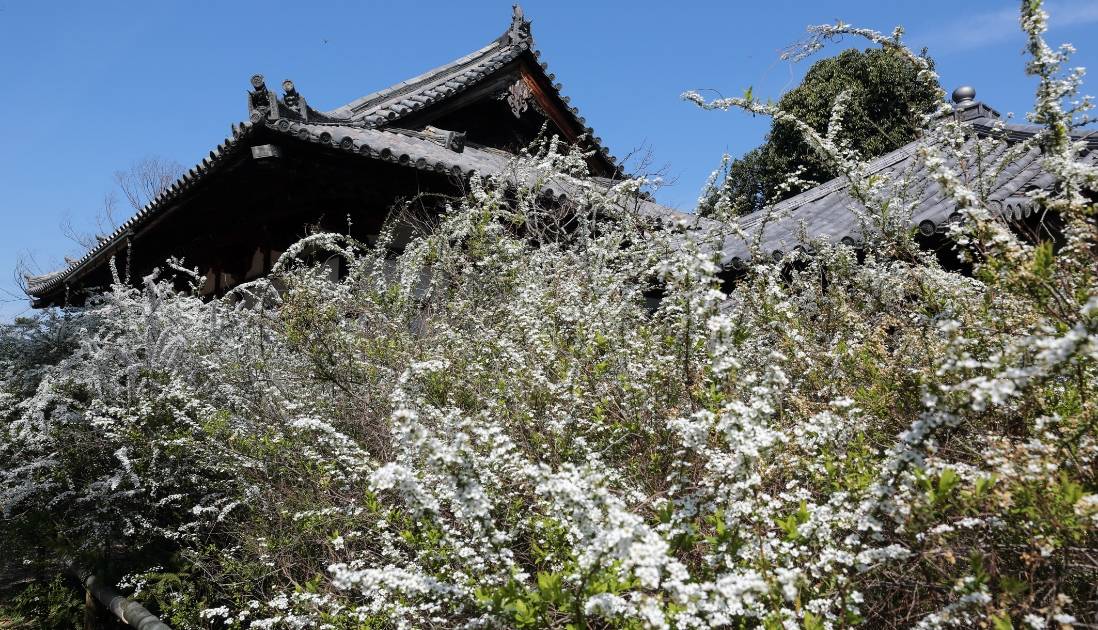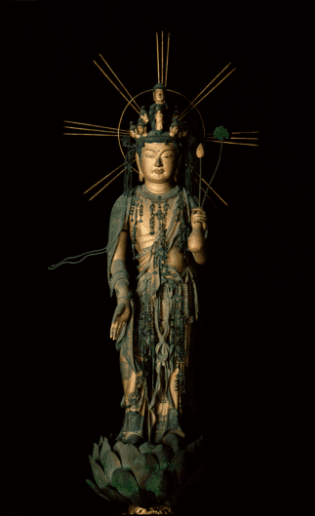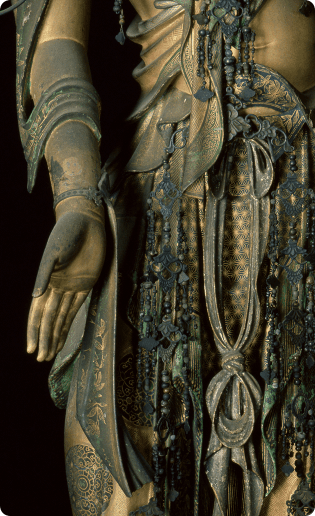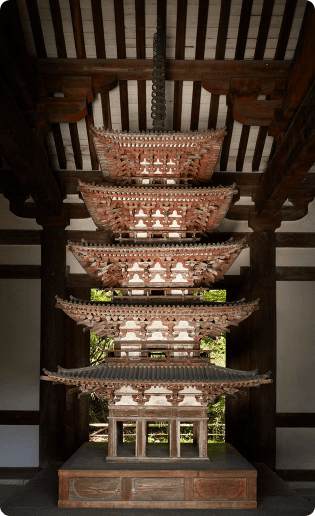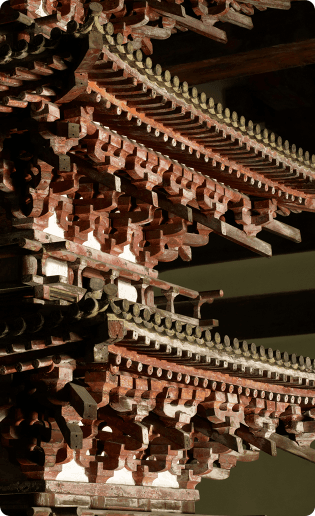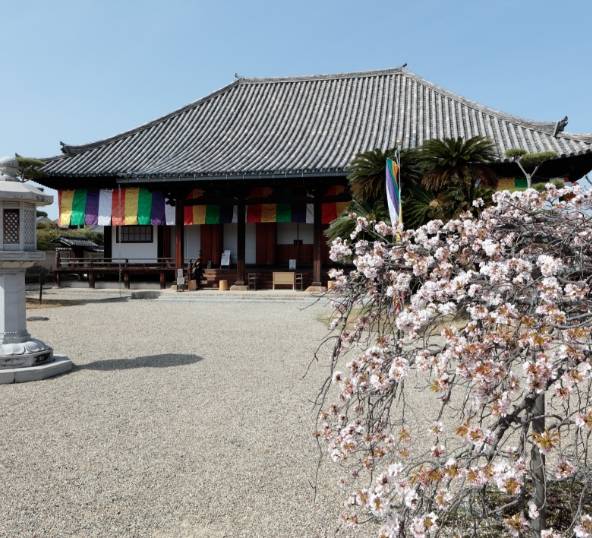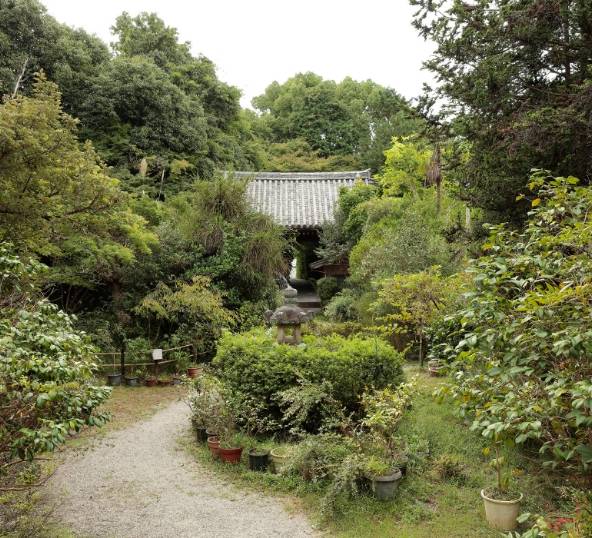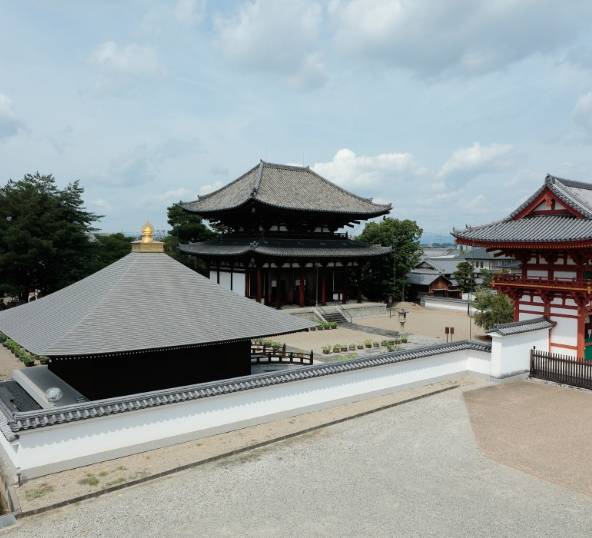Kairyuoji
海龍王寺
海若(わたつみ)の いづれの神を 祈らばか 行くさも来さも 船は早けむ
Kairyuoji Temple was originally established in the Asuka period (552–645) to enshrine Bishamonten, a protective Buddhist deity. Fujiwara no Fuhito (659–720), a powerful member of the imperial court, built a residence here that encompassed the temple compound. In 731, his daughter, Empress Komyo (701–760), renamed the temple Kairyuoji, literally “Sea Dragon King Temple.”
An early temple narrative relates that the eighth-century Buddhist priest Genbo had an important part in shaping Kairyuoji’s history. Genbo traveled to Tang Dynasty China to study and acquire Buddhist sutra scrolls. On his return trip, his small fleet of ships sailed into a fierce storm. Genbo continuously chanted sutras, including the Sea Dragon King sutra, to see his ship to safety. He returned to Kairyuoji with his precious cargo of 5,000 sutra scrolls, became head priest, and established Japan’s first sutra-copying center. The temple was named after the Sea Dragon King sutra.
Since then, Kairyuoji has survived various periods of decline, sustaining damage during the Onin War (1467–1477), the Keicho Earthquake (1614), and the anti-Buddhist movement of the 1870s. Kairyuoji was most recently revived after World War II. Today, it houses a number of Important Cultural Properties, including the Statue of Eleven-Headed Kannon and the Five-Story Pagoda. Many visitors pray for safety as they cross the seas on their travels or to study abroad.
National Treasures and Important Cultural Properties
Hign
Within the Temple Precincts

Scroll

Keywords to Help Understanding of the Temple
Keywords
Five-Storied Pagoda
Typically, a five-story pagoda is located outdoors, but at Kairyūōji, due to the limited space of the temple grounds, it is said that a small five-story pagoda of about 4 meters was constructed from the beginning in a planned manner and placed inside the hall. The fact that it is small allows for a detailed appreciation of the intricate design of the brackets and other architectural features, which is a delightful aspect of this pagoda.
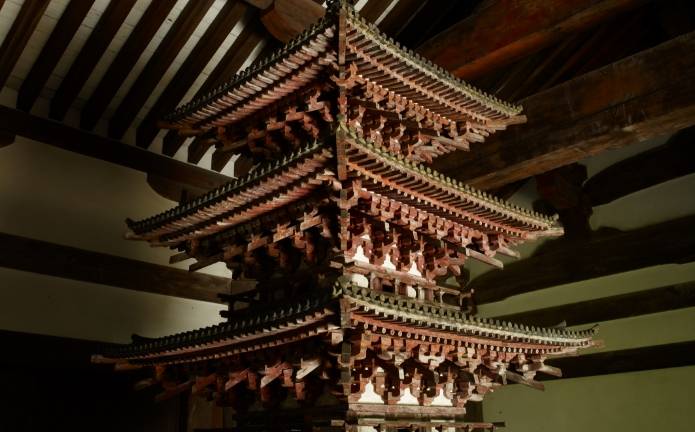
Basic Information
Kairyuoji
- Official Website
- https://kairyuouji.jp/en/
- Hours
-
9:30 AM – 16:30 PM
Note: During special openings, the hours are from 9:00 AM – 17:00 PM.
- Entrance fee
-
Adults: 500 yen
Junior High & High-School Students: 200 yen
Elementary School Students: 100 yen
Note: During special openings, the fees are: Adults: 600 yen
Junior High & High-School Students: 300 yen
Elementary School Students: 100 yen
※ These rates outline the general admission fees and the adjusted fees for special events. - Access
- About a 15-minute walk from Kintetsu Shin-Ōmiya Station.
- Tel
- 0742-33-5765
Other temples in the Saki district
Temple
The original text and modern translation of the Man'yōshū on this site are quoted from Kodansha Bunko's Man'yōshū Complete Translation with Notes and Original Text (by Susumu Nakanishi).
